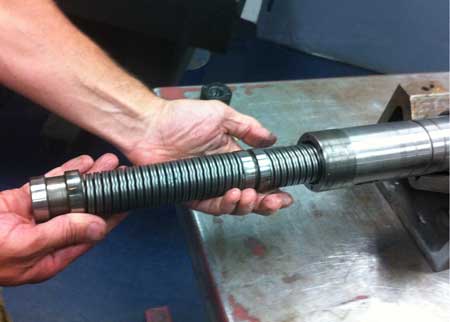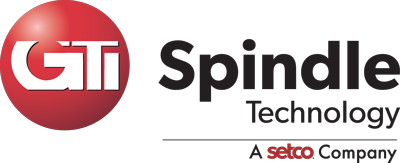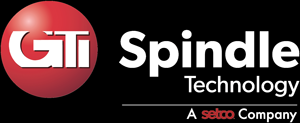Drawbars are the type of equipment component that are easy to not think about. Until something goes wrong with it, and you’re suddenly looking at considerable repair bills and potential downtime.
In spindle applications, the toolholder does exactly that, holds the tool. Ironically, toolholders themselves have to be held. That’s where drawbars come into play. Put simply, drawbars are a rod that goes through the spindle shaft and draws the tool holder with the tool into the spindle shaft ID. In doing so, the drawbar exerts force on the toolholder itself, steadying it in the spindle. It’s essentially a clamping mechanism.
The Impact of Misbehaving Drawbars
 For such an overlookable part, drawbars can have an outsized impact on both your production and the health of your equipment.
For such an overlookable part, drawbars can have an outsized impact on both your production and the health of your equipment.
Almost every aspect of a drawbar, if even slightly off, can have near-immediate impacts on part quality. Some of the most common issues are:
• Insufficient drawbar retention force
• Gripper finger-to-retention knob contact quality
• Knockout seal condition
Aside from causing decreased consistency and quality of the components you produce, each of these issues can cause physical problems with your equipment as well. In particular, insufficient (or oversufficient) drawbar tension damage both your toolholder and tools. Damage can also result from poor contact between the drawbar’s gripper finger and the toolholder’s retention knob. And we all know about the headaches that contaminants introduced through a faulty seal can cause in high speed machine tools.
Of course, issues that improper drawbar tension — and the lack of preventative maintenance that allows them to get into that state — don’t stop there. Other issues include:
- Fretting (essentially microwelding) on the shaft taper
- Bell mouthing of the shaft taper
- Worsening repeatability issues
- Overall reduction of tool and toolholder lifespan
- Improper cutting pressure
- Damaged locking assemblies
- Damaged Belleville springs
- Excessive rust and corrosion
Drawbar Repair and Preventative Maintenance
In a best-case scenario, neglecting your drawbar will result in slowly degrading part quality and eventual non-operation of your spindle. In a worst-case scenario, it can lead to catastrophic failure, with damage costs climbing into the five-figures (not including unplanned downtime) and can put your staff at serious risk.
Luckily, preventative drawbar maintenance is rather simple and relies on checking the drawbar’s force regularly as follows:
- Our recommendation is to inspect it about every 2 months with a drawbar force gauge.
- The goal is to spot a decrease in strength before any noticeable issues arise. So, plot your data carefully and regularly, and pay close attention to changes. And remember, a trend is your friend!
- Note that the proper force varies greatly from model to model, so please rely on the manufacturer’s specifications.
- If the holding force of your drawbar approaches 90% of spec (a big drop in a low-holding force application), it’s time to repair or replace.
It doesn’t take that much effort to do this. It’s worth it. A simple routine drawbar inspection will likely save you a lot of time, money and aggravation in the long run.

